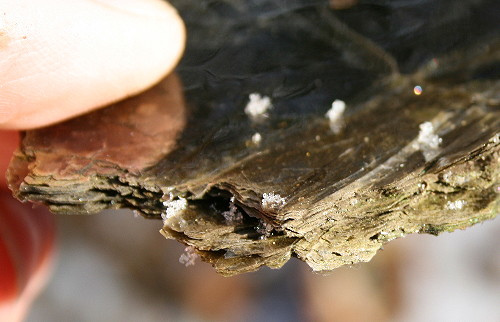Minerals and Rocks
One exciting thing from minerals and rocks is the use of the mineral muscovite mica in electronics like smartphone.

One exciting thing from minerals and rocks is the use of the mineral muscovite mica in electronics like smartphone.

| Word | Definition |
|---|---|
| Minerals | are natural, inorganic, crystalline solids |
| Hardness | If a mineral scratches glass, it is harder than glass, otherwise it is softer than glass. |
| Streak | mineral powders left behind after the mineral is rubbed against an unglazed ceramic tile. |
| Luster | is metallic if the mineral shines like a metal. Nonmetallic luster if the mineral does not shine like a metal. |
| Cleavage | a mineral has cleavage surface if the mineral breaks along a flat and smooth surface. |
| Fracture | a mineral has fracture surface if the mineral breaks along uneven surface. Its surface is not flat. |
| Rocks | a substance that is a natural part of lithosphere (solid Earth). |
| Igneous Rocks | form from solidification of molten rocks. Molten rocks are liquid rocks (magma). |
| Sedimentary Rocks | form from the compaction and cementation of sediments. |
| Sediments | are smaller pieces of rocks. |
| Metamorphic Rocks | form from other rocks that were exposed to extreme heat and pressure. |
| Magma | are hot, liquid rocks inside the Earth. |
| Lava | are surface magma on the surface of the Earth. |
| Intrusion | the movement of magma inside Earth's crust. |
| Extrusion | the movement of magma on Earth's surface. |
| Vesicular | holes on some igneous rocks, like pumice and scoria. |
| Foliation | alignment of minerals in metamorphic rocks. |
| Banding | is the alternating light and dark layers parallel to foliation. |
| Metamorphism | is when rocks experience extreme heat and pressure. |
| Ore | is an economic concentration of minerals. |
Which characteristic would most likely remain
constant when a limestone cobble is subjected to
extensive abrasion?
(1) shape (3) volume
(2) mass (4) composition